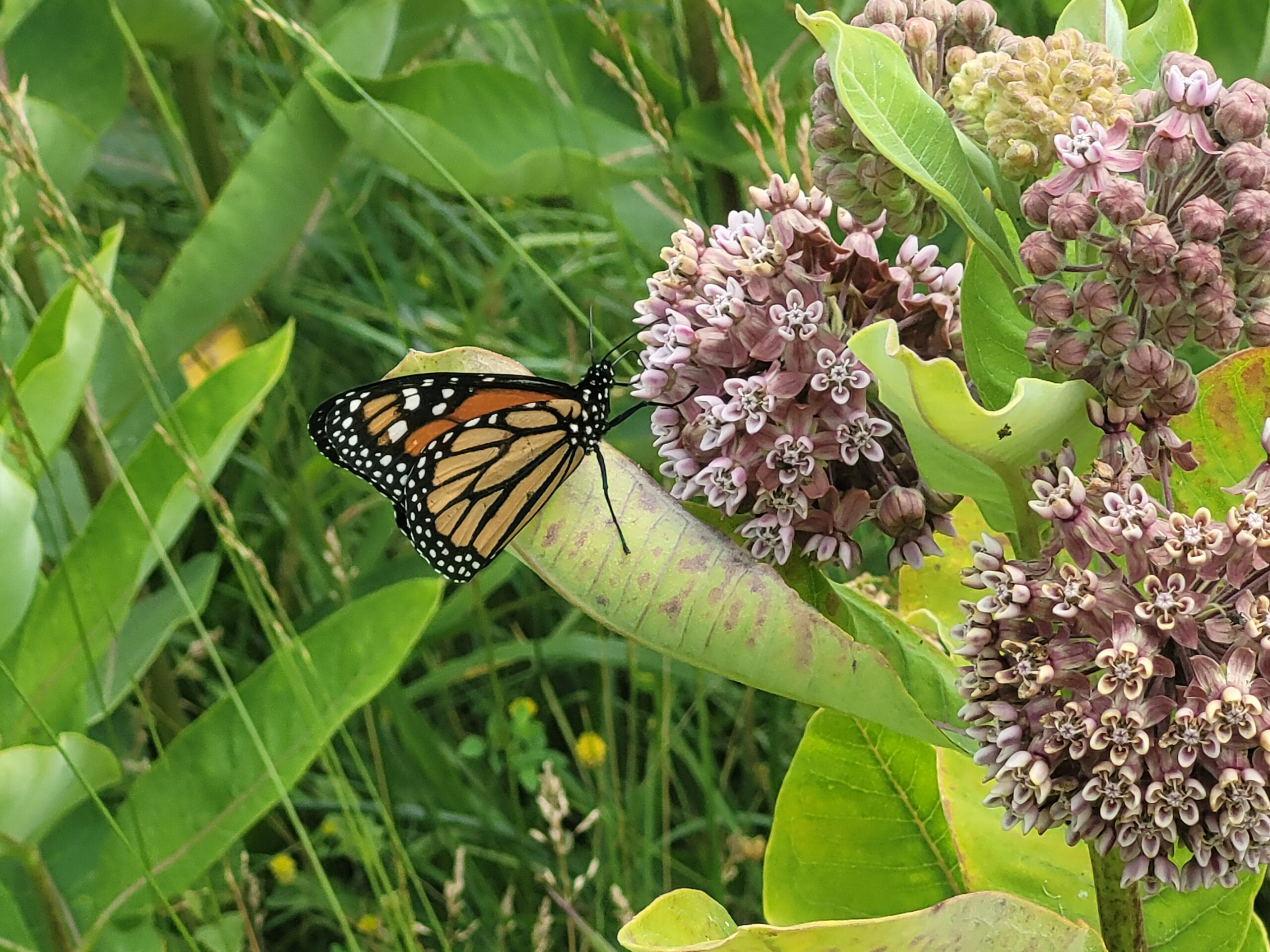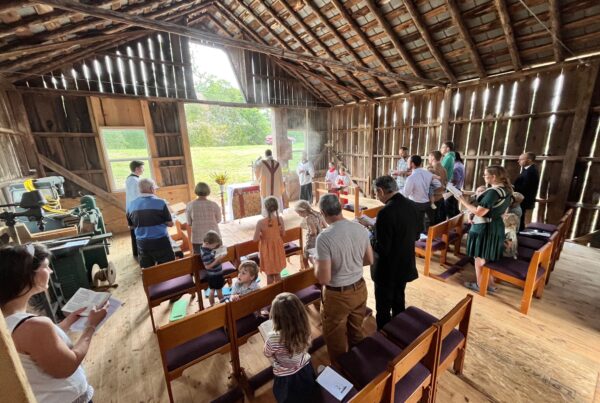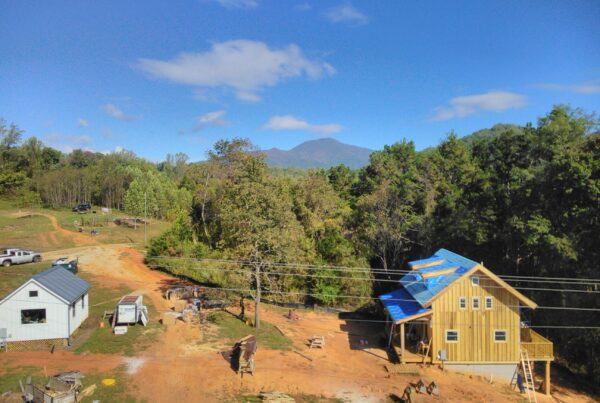Robert Mosolgo — one of our farming advisors, a timber framer, and one of our most dedicated volunteers — walked the campus fields a few weeks back to develop a more detailed understanding of the grazing potential of our pastures.
The resulting post at his website is a treasure-trove for grass-loving nerds, not to mention a quite helpful resource for us as we move towards developing gardening (about which more shortly) and animal husbandry here at campus.
I’ve excerpted a bit here:
From the main campus hilltop, I headed downhill toward Possum Trot. The improved moisture and fertility was immediately visible in the standing hay crop: the grass was leafier, taller, and more dense. It also contained more orchard grass in the mix – good news if you’re a cow!
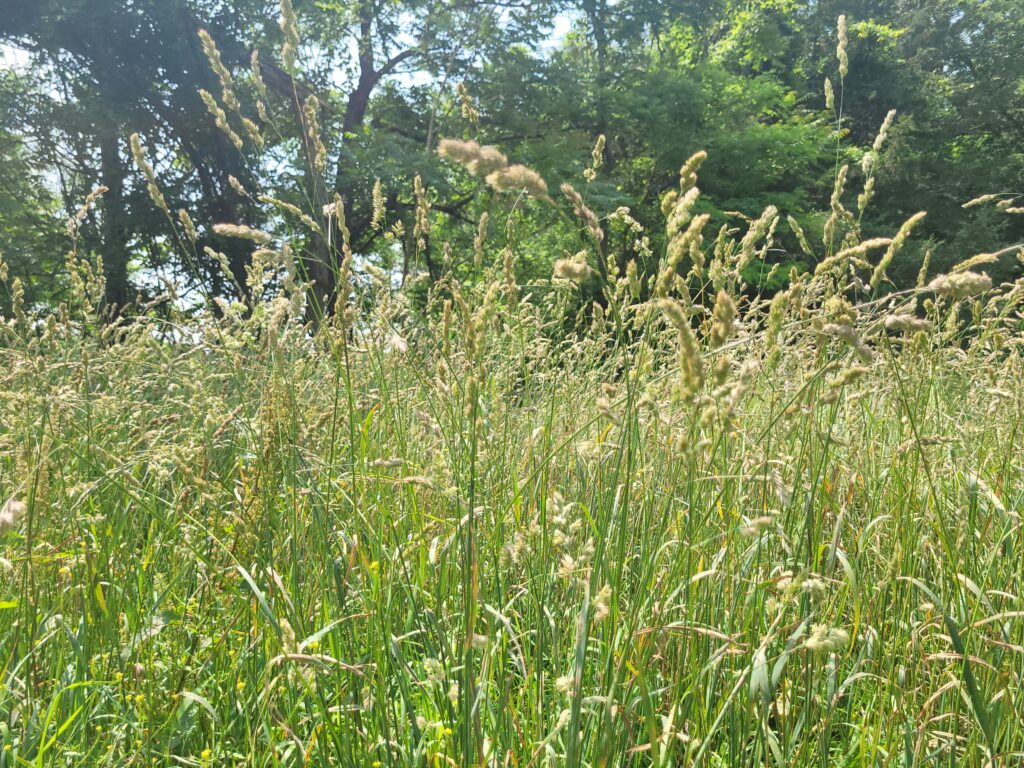
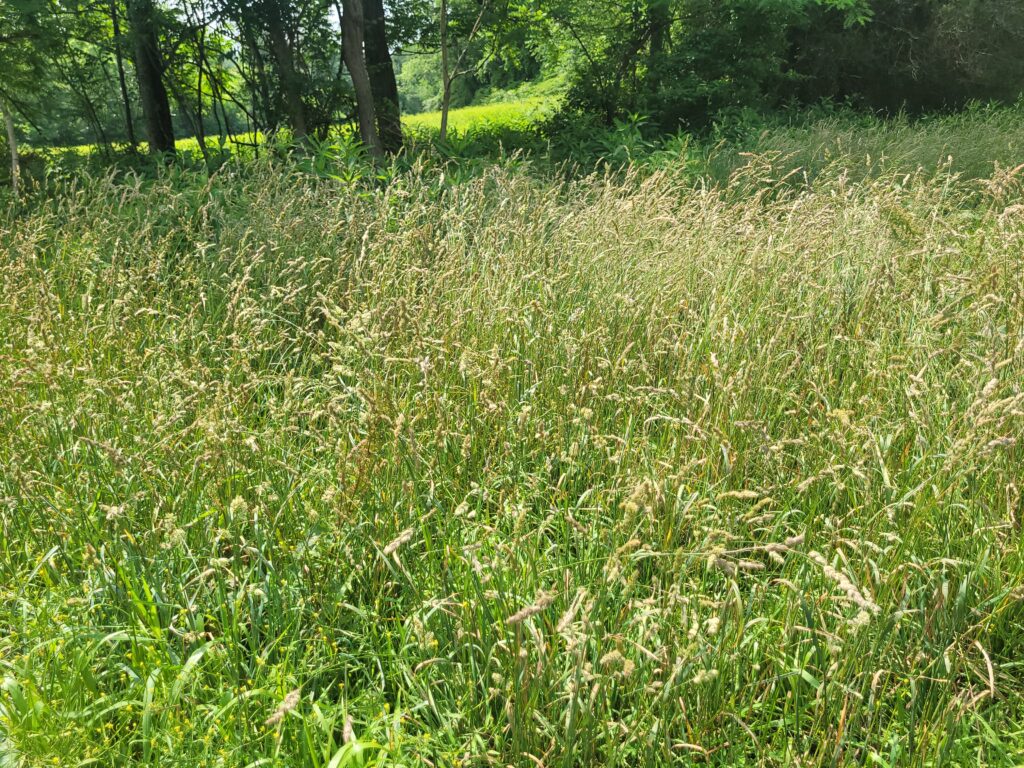
This field also has a depression in the middle, and that day, there was standing water in it. Even from a distance, a wet spot is identifiable by its impact on the plant life. Around here, that usually means dogbane and rushes:
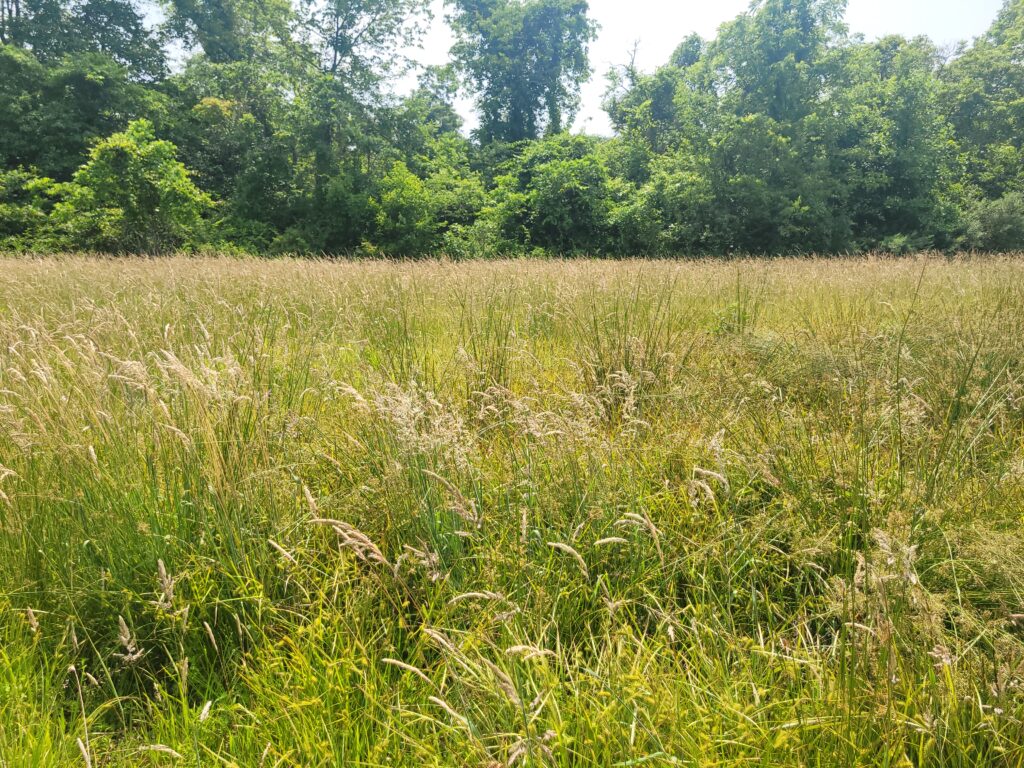
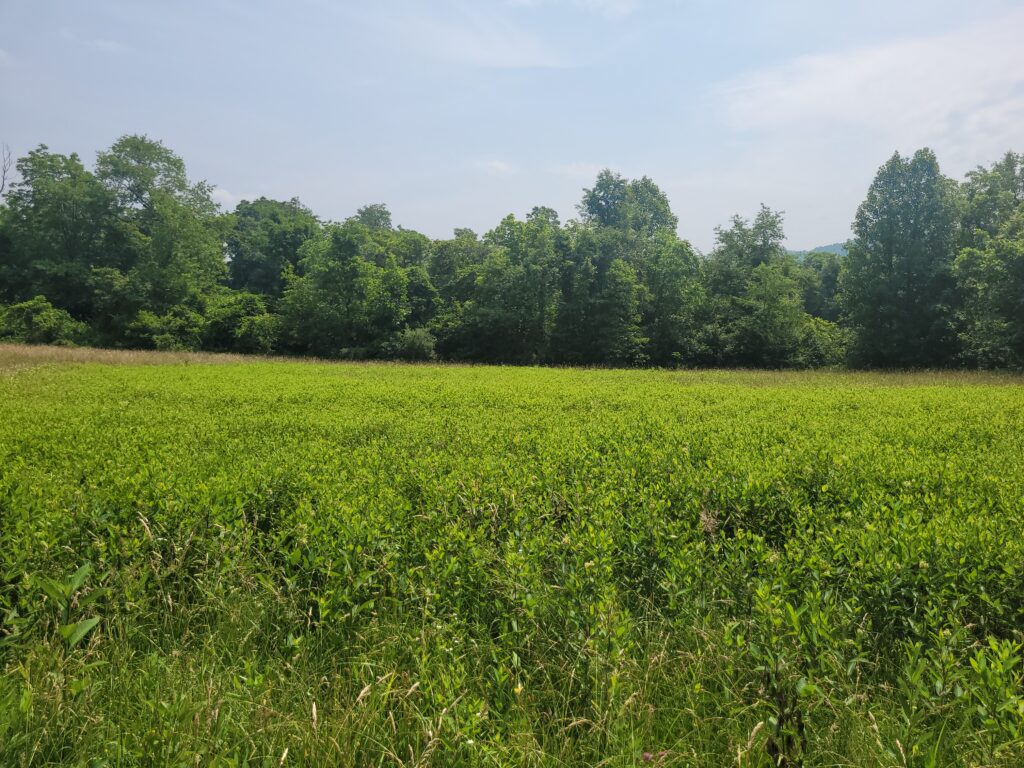
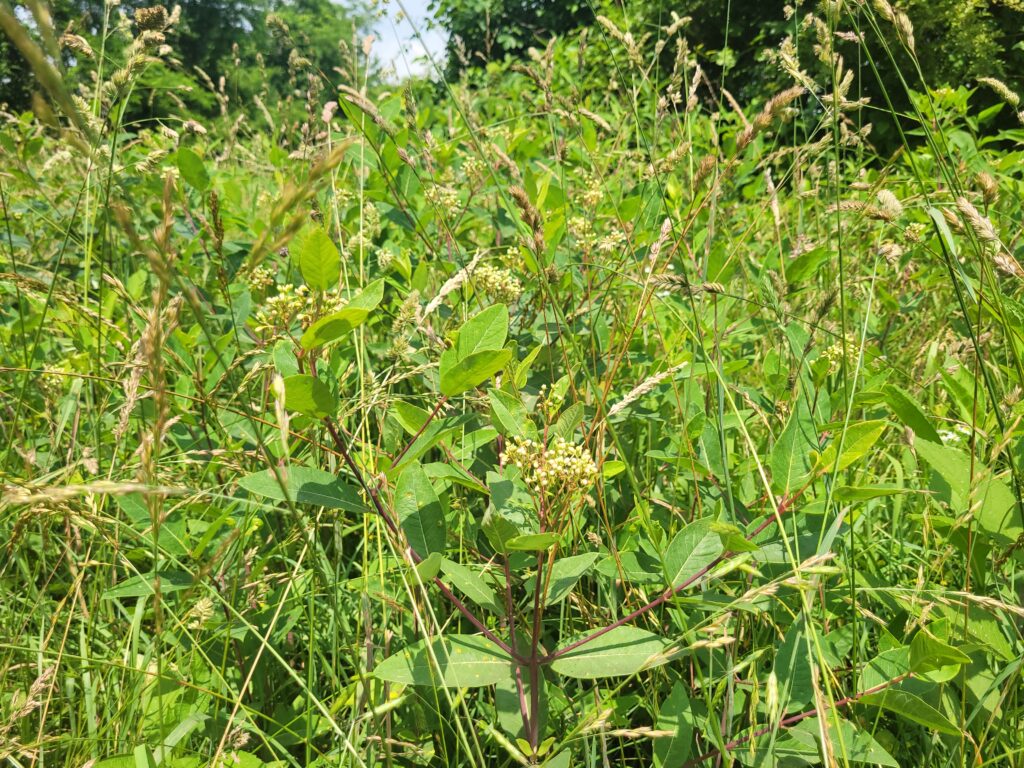
(Dogbane looks like milkweed but can be distinguished by its finer, reddish stems. It’s poisonous … although my goats used to eat it!)
I’ll be interested to see how we can make use of this wet spot in the future. It could be one of the most productive pastures on campus during the heat of the summer!
I loved seeing the understory of white clover in this field. Also, here’s a picture of mature orchard grass leaves. They’re bluish, with a defined crease in the middle:
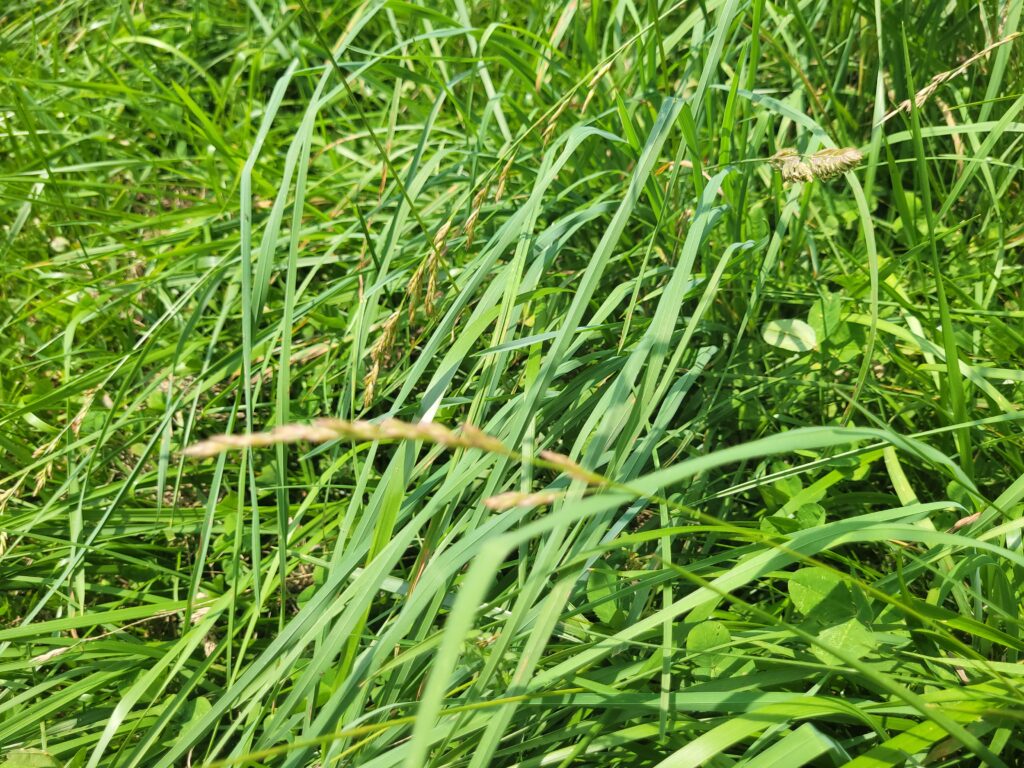
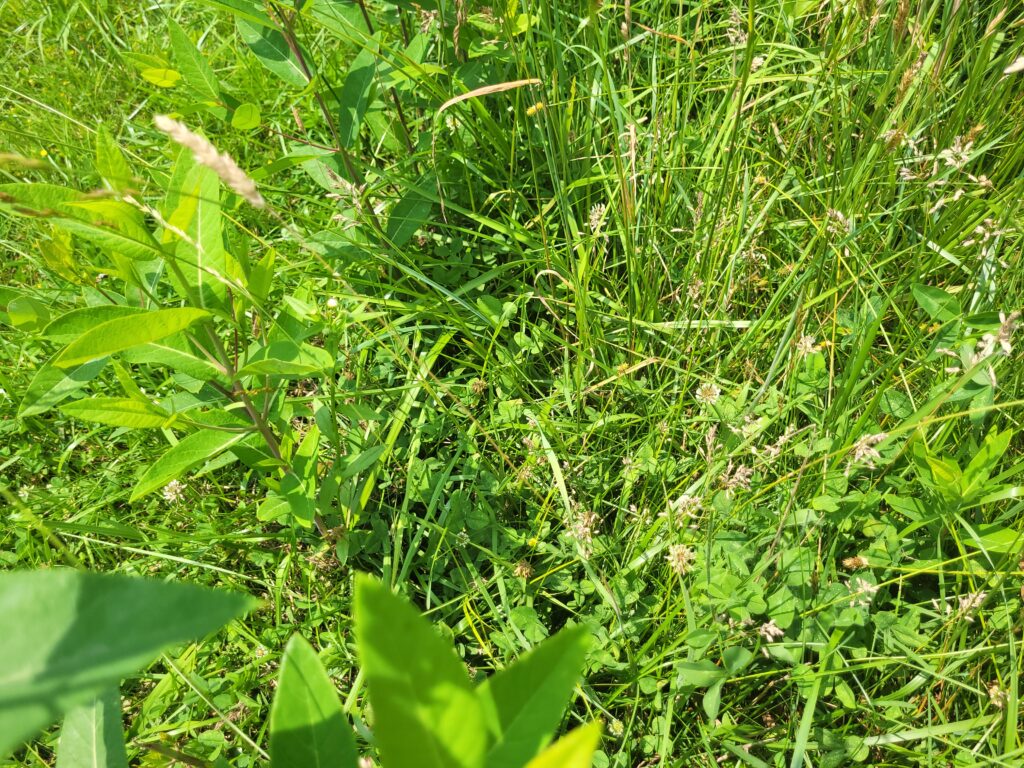
We’re so grateful for Robert’s enthusiasm and aid as we seek not only to develop our farming operations for the sake of the school, but also to act as good stewards for the remarkable land God has given us!


